28 Types of Trees in Michigan (With Pictures)
-
Hallie Roddy
- Last updated:
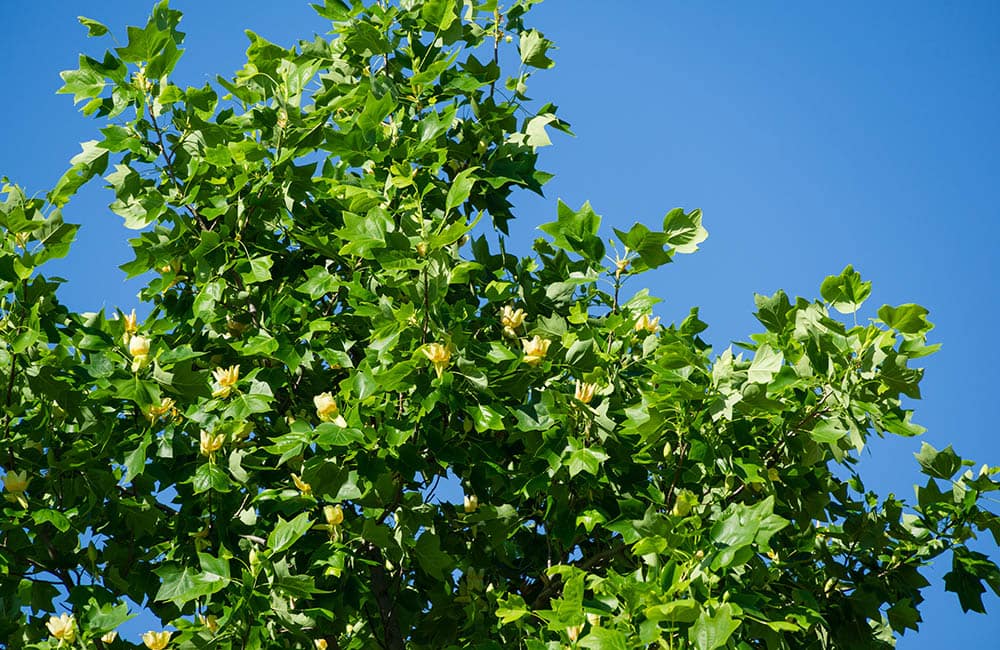
The mitten-shaped state of Michigan lies in the Midwest and is surrounded by the large bodies of water called the Great Lakes. Covering over 97,000 square miles and the longest freshwater shoreline in the world, you can imagine how many tree species there are to see here. Whether you live in the state and are curious about the plant life here or you’re simply trying to learn more from afar, this article will go over some of the beautiful trees you can find in the great state of Michigan.
The 28 Types of Trees in Michigan
1. Ash (Fraxinus)
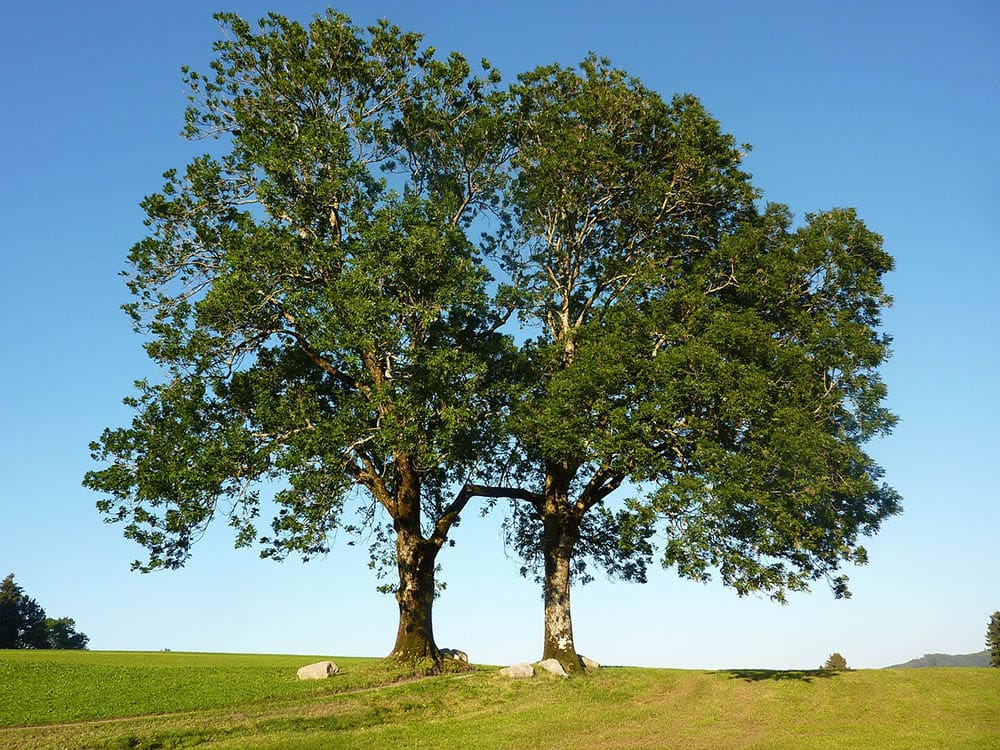
While ash is a genus that contains roughly 65 species, we are going to bundle them all into one. Most ash trees are dioecious, meaning they produce male and female gametes on separate plants. This makes them widespread across all of North America, Asia, and Europe, so it’s no wonder why you can find them in the Wolverine State.
2. American Beech (Fagus grandiflora)
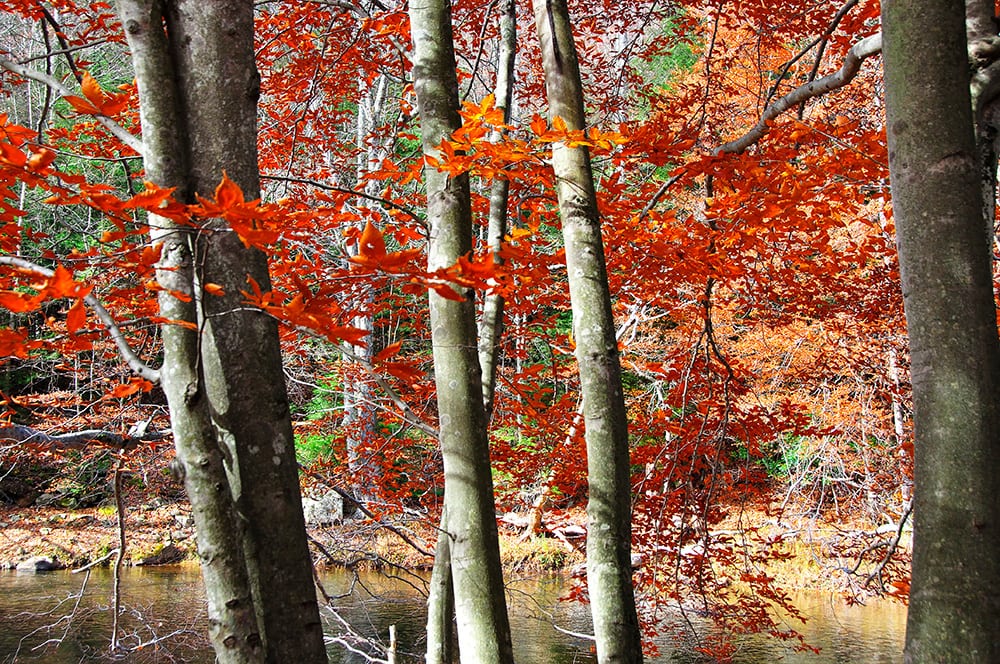
Beech trees are usually large-to-medium-sized deciduous trees that are indigenous to North America. They often grow over 100 feet tall and are most easily identifiable by their silver-colored bark with toothed leaves.
3. Aspen (Populus tremuloides)

Aspens thrive in the cooler areas of North America, so it makes sense why you’d find them in a northern state like Michigan. These trees are not as tall as beech trees, usually growing only 80 feet tall. However, they have a pale, smooth bark and are one of the most widely distributed trees in all of North America.
4. Basswood (Tilia americana)

Basswood is most common in the eastern regions of North America. Michigan, Manitoba, Oklahoma, Nebraska, and South Carolina contain the largest populations. They are extremely fast growing and can live up to 200 years.
5. Yellow Birch (Betula alleghaniensis)
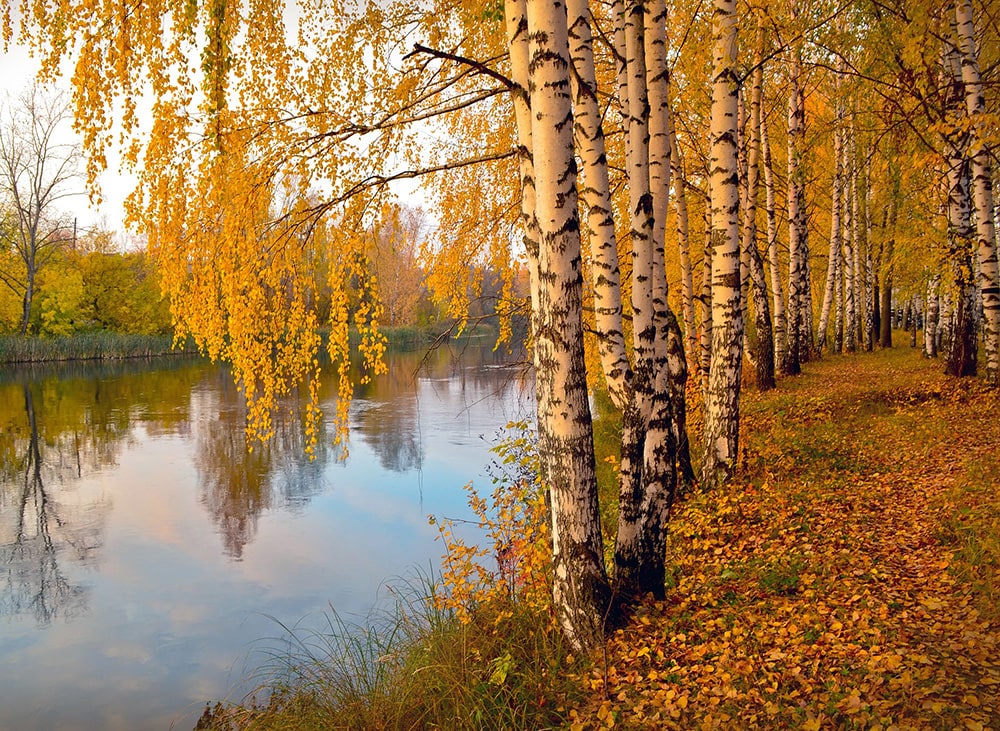
Birch is another species indigenous to North America. It is mainly used for lumber and is one of the largest species of birch on the continent. Plus, they live for up to 150 years, so you’ll definitely see a few of these thriving in your neighborhood.
6. Boxelder Maple (Acer negundo)
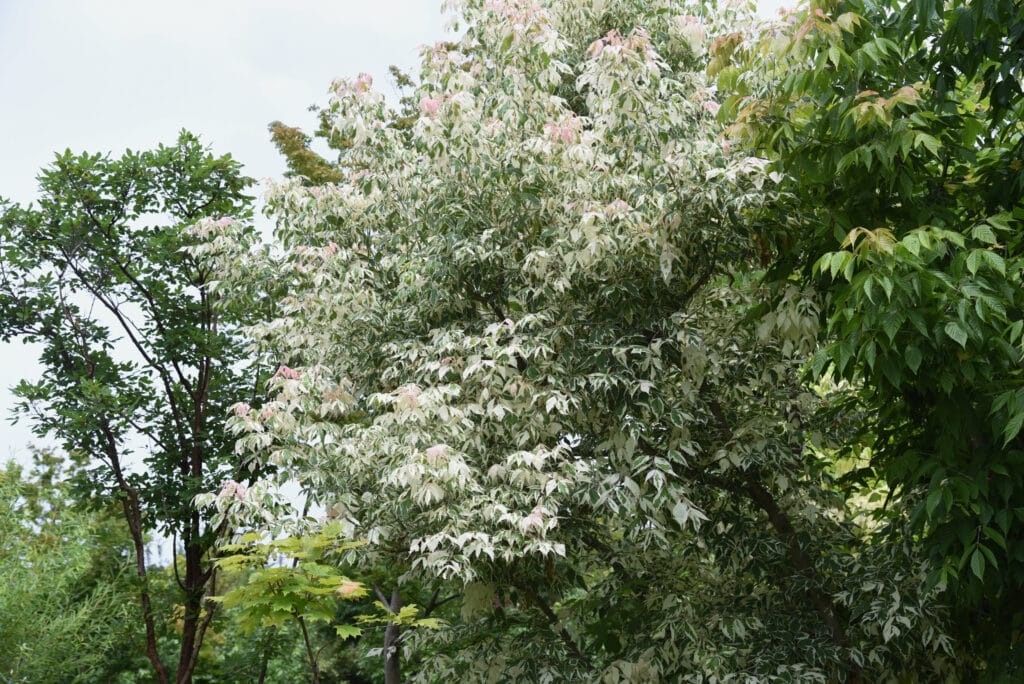
You might hear this species called the Manitoba maple or the ash-leaved maple. While they don’t live for very long (60 years), they are extremely fast growing, to the point that they are considered an invasive species in some parts of the world.
7. Eastern White Pine (Pinus strobus)
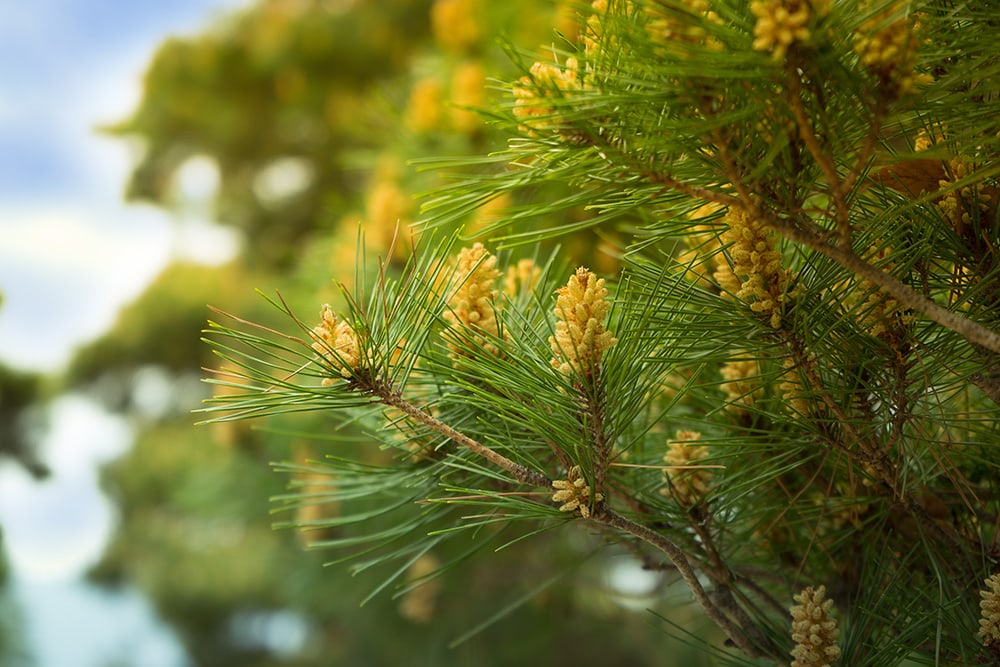
This wouldn’t be an accurate article about Michigan trees if we didn’t include the eastern white pine, also known as Michigan’s official state tree. This large pine species is native to the state, although you can also find them in areas like Manitoba, Minnesota, northern Georgie, and the Appalachian Mountains. Towering over 150 feet and living over 250 years, you’ll be able to recognize this tree if you’re a Michigan native.
8. Butternut (Juglans cinerea)

Most people called the butternut tree the white walnut tree. It has large populations in Michigan and lives to be over 75 years old. It is best known for its rich, butter-flavored nuts that are often used in baking.
9. Catalpa (Catalpa speciosa)
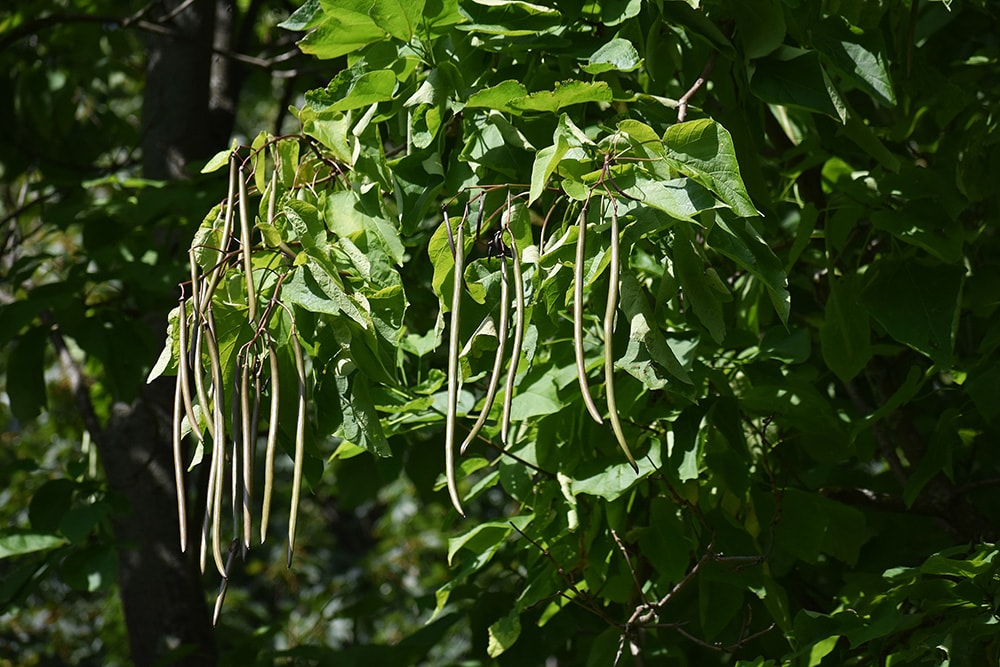
One of our favorites, the catalpa tree is stunning while in full bloom. This flowering plant has a wide branch spread with heart-shaped leaves. It also produces long, green-bean-like seed pods that give it an even more interesting appearance. Flowers range from white to yellow and completely take over the tree, contrasting against the green foliage.
10. Sweet Cherry (Prunus avium)

Another gorgeous flowering tree is the sweet cherry or bird cherry, as it is also called. It may have been naturalized in North America, but it is actually indigenous to Europe, northern Africa, and western Asia.
11. Cottonwood (Populus sect. aigeiros)

If you’ve ever seen little puffs of white floating through the air in the summer, you’re likely seeing the seeds from the cottonwood trees. These grow up to 100 feet tall and have wide trunks with tough gray bark. Be careful, because these seeds come in full force and can easily clog your pool filter or cover your A/C unit.
12. Chestnut (Castanea)
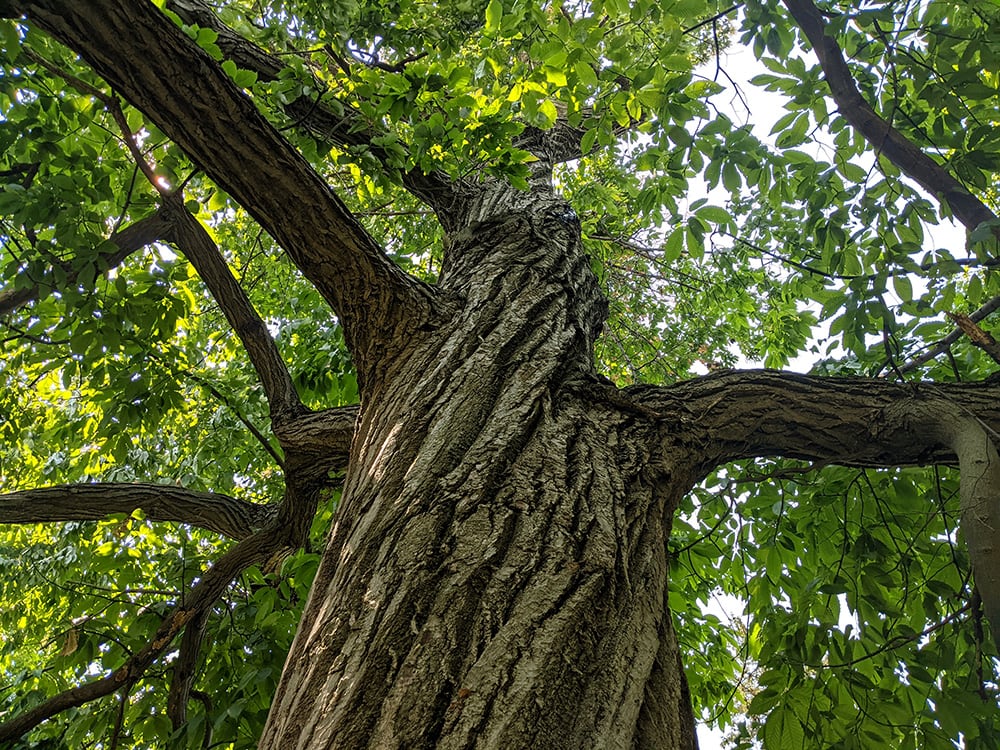
These deciduous trees are part of the beech family and are native to the Northern Hemisphere. They produce edible nuts and are perfect for any property since they come in shrub and giant varieties.
13. Flowering Dogwood (Cornus florida)
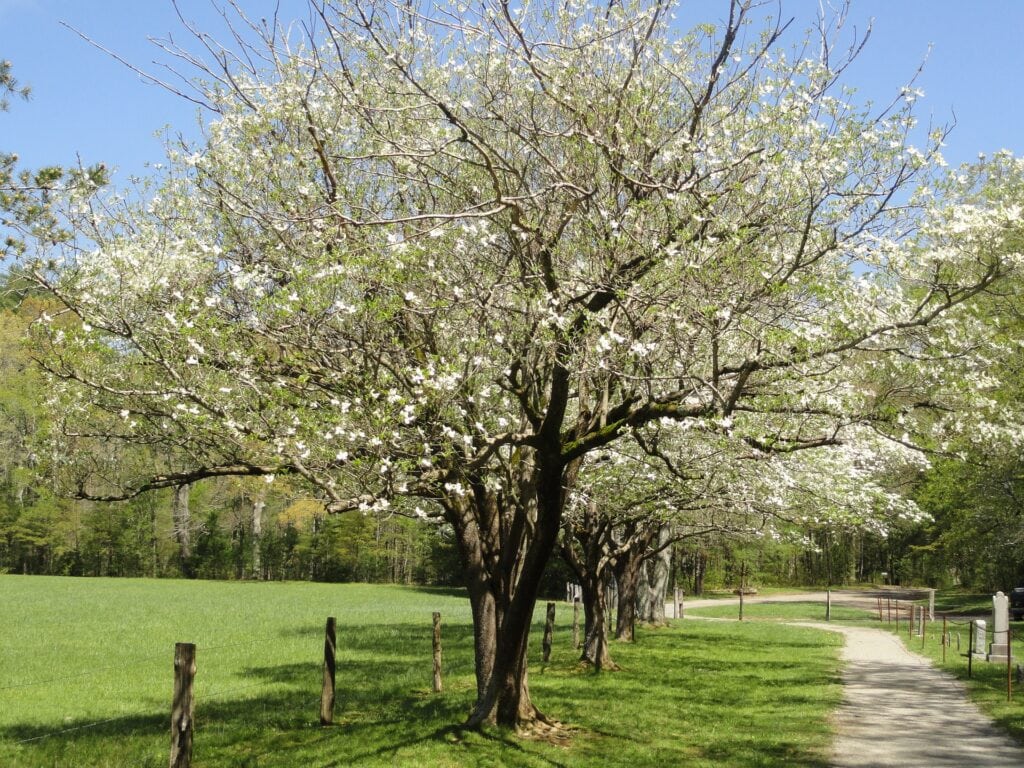
As one of the most popular flowering trees, the flowering dogwood is gorgeous in both urban and rural locations. They are indigenous to northern Mexico and North America. They often become wider than they are tall, and the dense flowerheads are well worth the short bloom time.
14. Elm (Ulmus)

It’s nearly impossible to reside in Michigan without ever seeing an elm tree. There are deciduous and semi-deciduous cultivars that once originated from Central Asia millions of years ago. They thrive in temperate and tropical regions and can grow to impressive heights with the right soil and pH levels.
15. Fir (Abies)
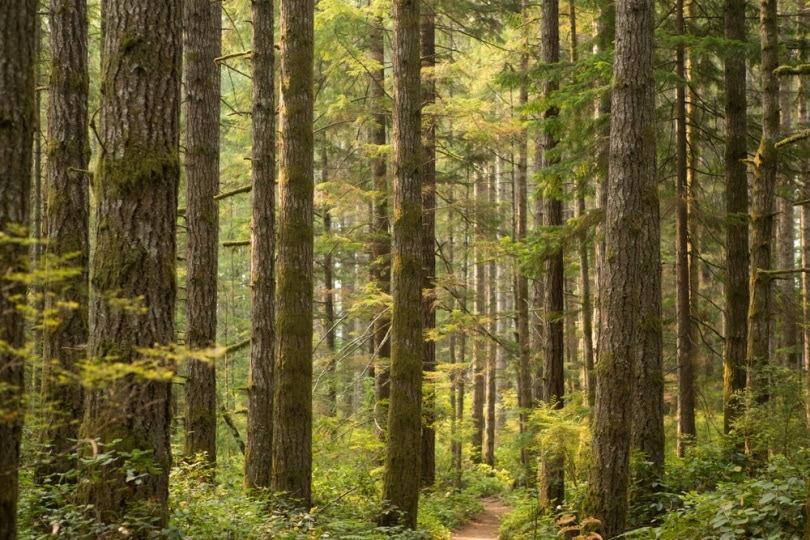
Firs are evergreen conifers with more than 40 species in the genus. They are so prevalent that you can find them in North America, Asia, North Africa, and Europe. The easiest way to distinguish them from other pine trees is by the arrangement of their needles.
16. Gum Tree (Eucalyptus mannifera)

The gum tree is commonly called the brittle gum or red-spotted gum. This is a smaller species, often only reaching 60 feet tall. They are also easily identifiable by their red-spotted bark.
17. Hemlock (Tsuga)
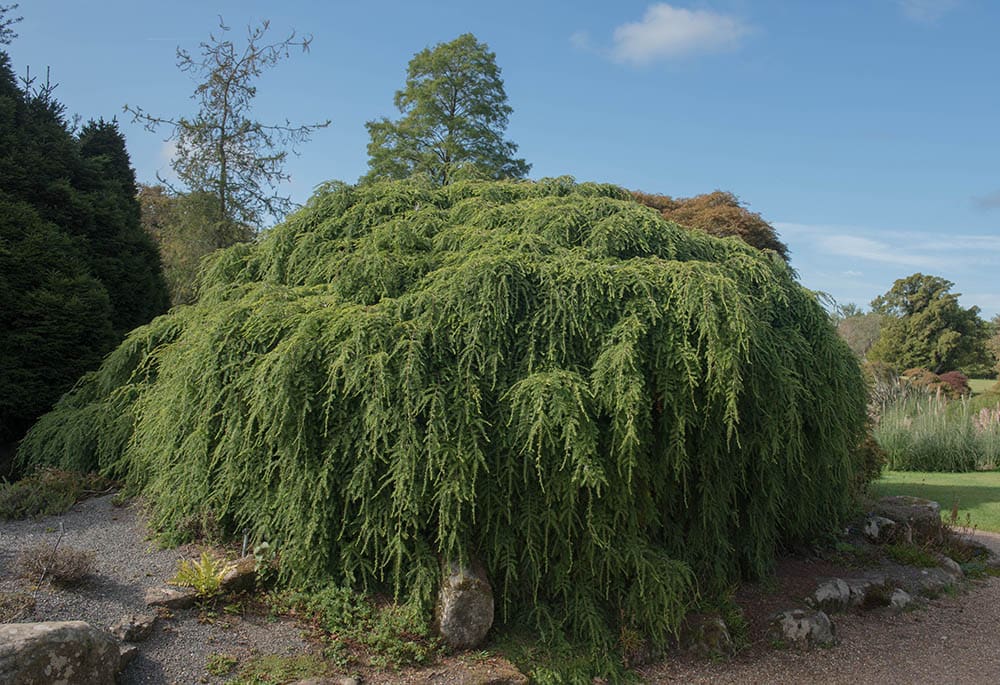
These slow-growing evergreen trees help to moderate air and water temperatures in eastern Tennessee. They are also commonly found in the Great Smoky Mountain and on the Cumberland Plateau. However, there are plenty of other places where you’ll spot them, and Michigan is no exception.
18. Hackberry (Celtis occidentalis)
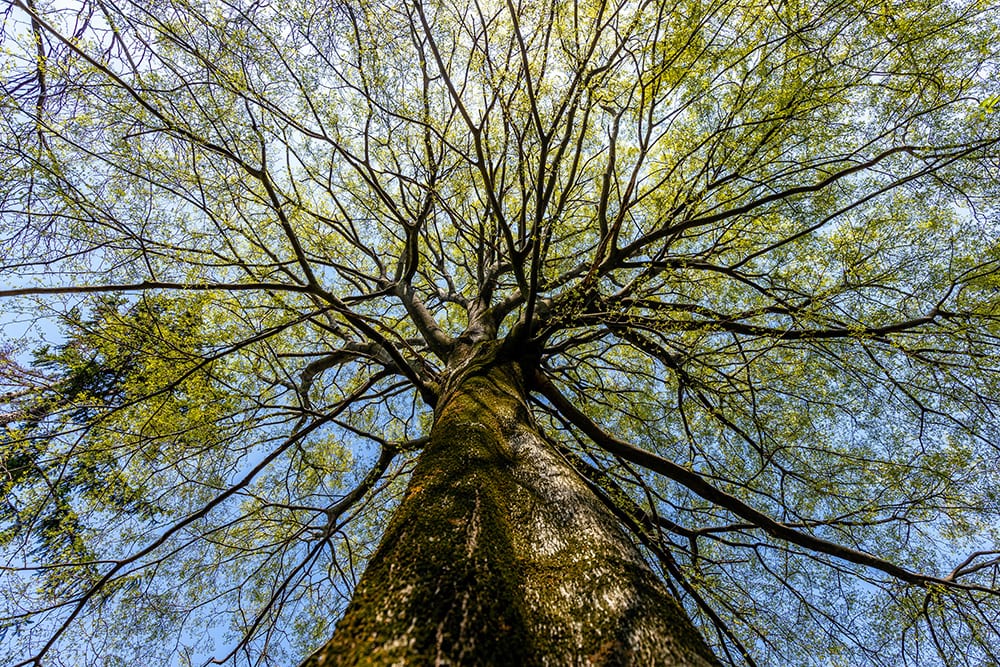
Hackberry trees are deciduous trees with light-colored wood that has yellowish-gray streaks. They aren’t very tall, often growing only up to 40 feet, although there are a few taller varieties.
19. Hickory (Carya)
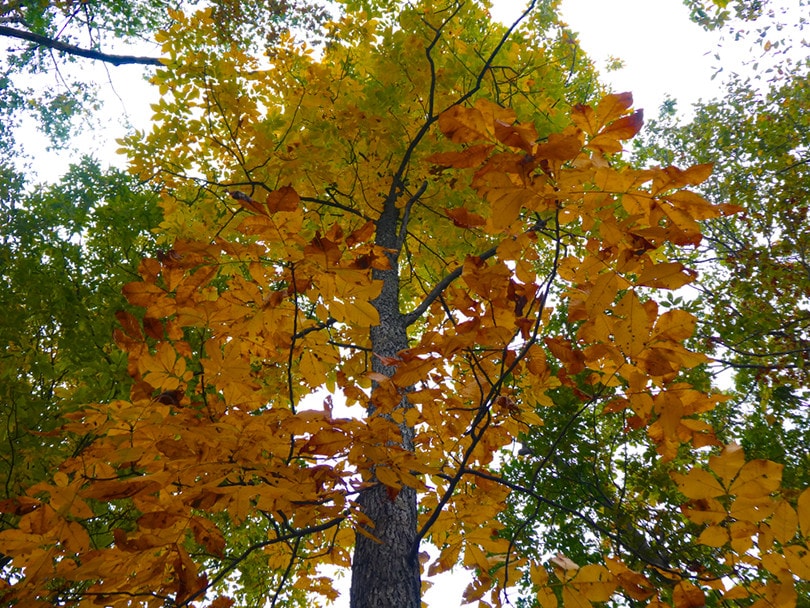
Another popular tree you’ve likely heard of, the hickory tree is part of the Carya genus. Most species are native to Indo-China, while many others are native to North and Central America. These trees belong to temperate forests and are even self-pollinating. They are often used for wood and nut production.
20. Kentucky Coffee Tree (Gymnocladus dioicus)
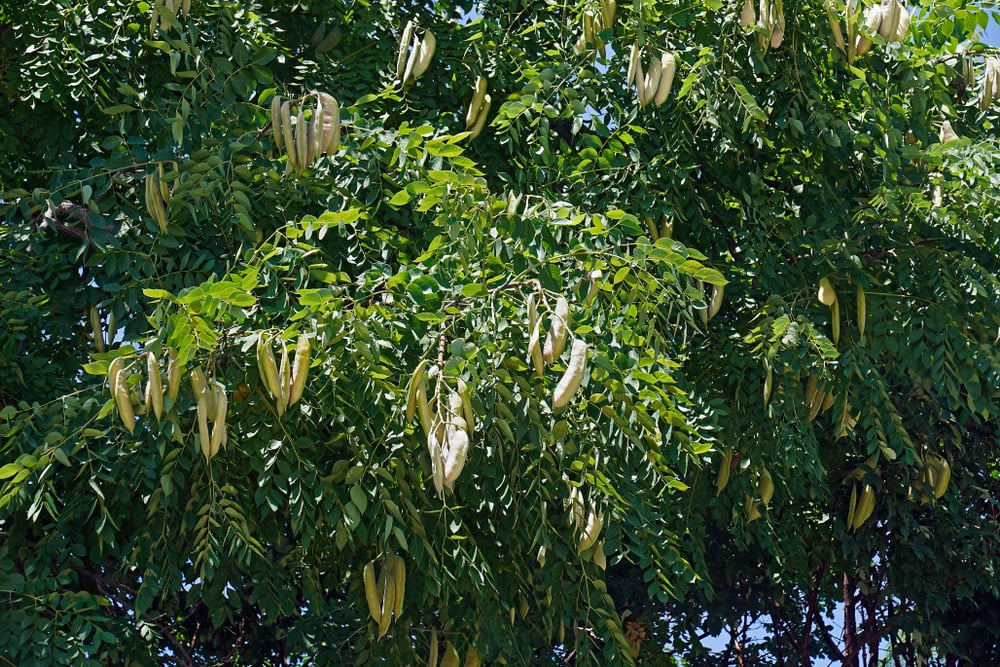
With a name like that, you wouldn’t think that you’d find this tree in the great state of Michigan. However, they are surprisingly present here. They are often used as ornamental trees, although carpenters love the hardiness of the wood as well.
21. Mulberry (Morus alba)
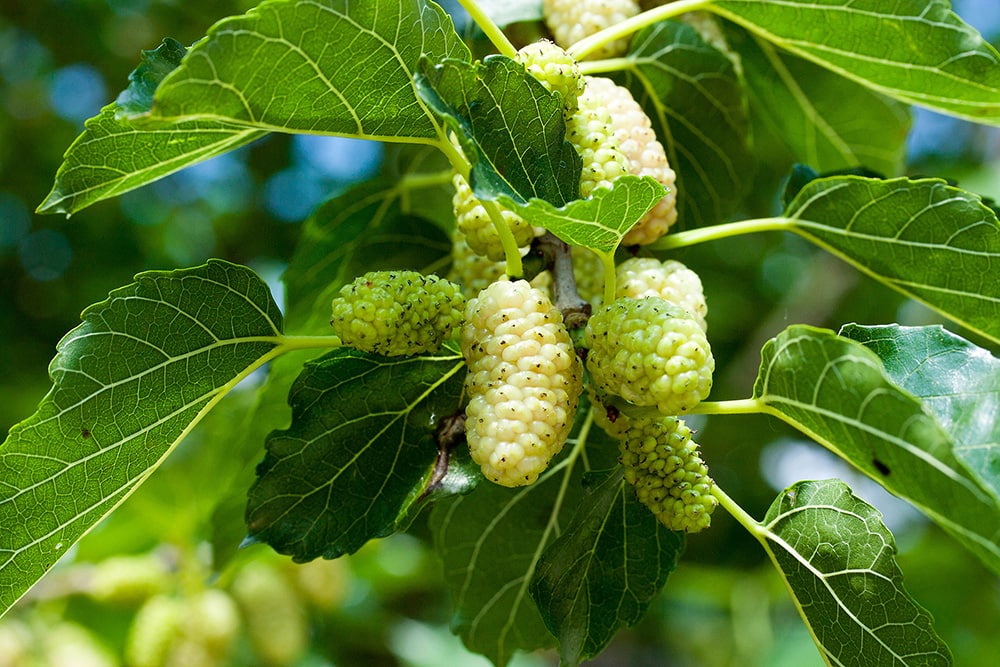
Have you ever tasted mulberry pie or jam? If not, you’re missing out. These dark berries, of course, come from the mulberry tree. These are small-to-medium-sized trees, although many of them can live to be 250 years old.
22. Sassafras (Sassafras albidum)
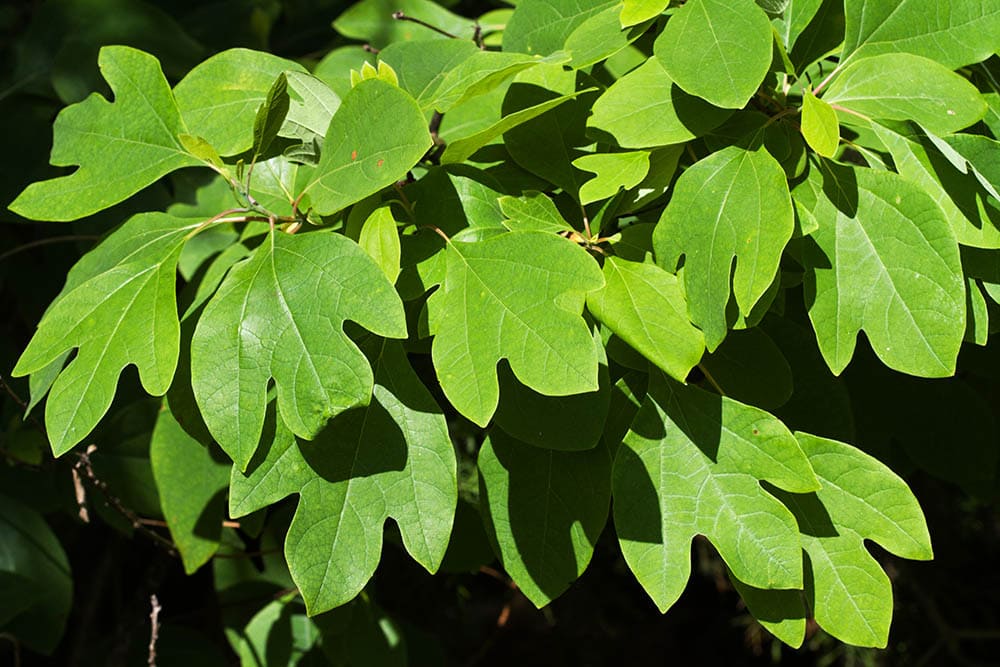
You’ll likely identify a sassafras tree thanks to its ridged bark that is brownish-red in color and its beautiful red horizontal patterns. The foliage is green, although it changes to a stunning golden-red in the fall. The birds, bees, and butterflies all love pollinating this species.
23. Spruce (Picea)

We couldn’t confidently create this list without including the spruce tree that demands attention. These conifers thrive in northern temperate regions and stand about 80 feet tall. Their most identifiable feature? Their whorled branches and perfectly conical form.
24. Sycamore (Platanus occidentalis)
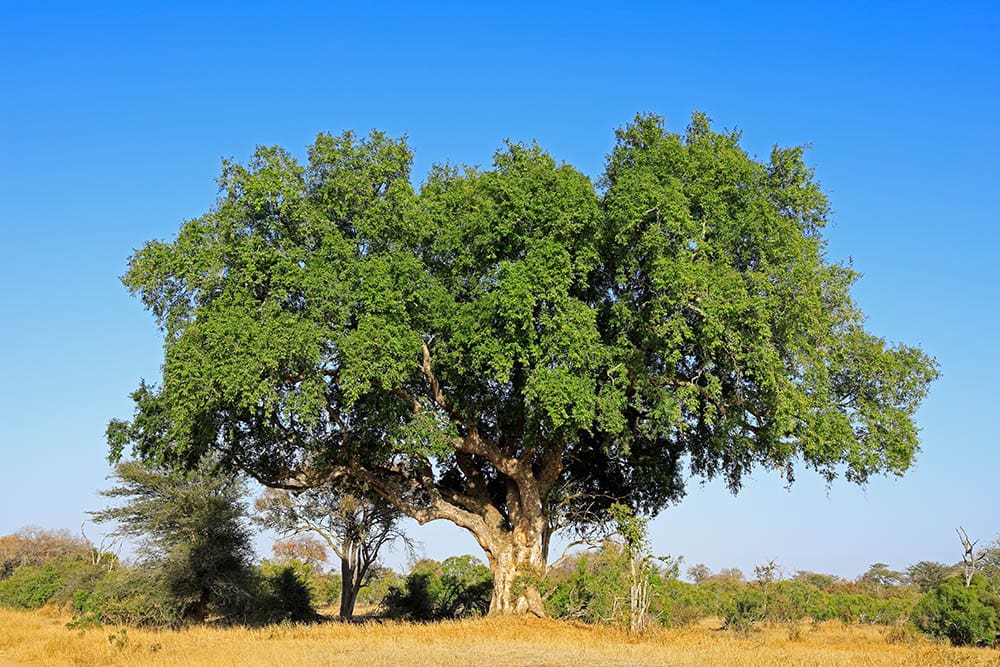
The American Sycamore is easily distinguished from other trees thanks to its mottled bark that often flakes off to leave a grayish-brown color peaking through. They thrive in deep soils and wetlands, so keep an eye out for them while you’re out exploring.
25. Sumac (Rhus)

Sumac trees are small, often only reaching 30 feet tall. They are flowering plants, with a deep-red color that stands out compared to all other nearby plants. They tend to thrive in East Asia, Africa, and North America.
26. Tulip Tree (Liriodendron tulipifera)
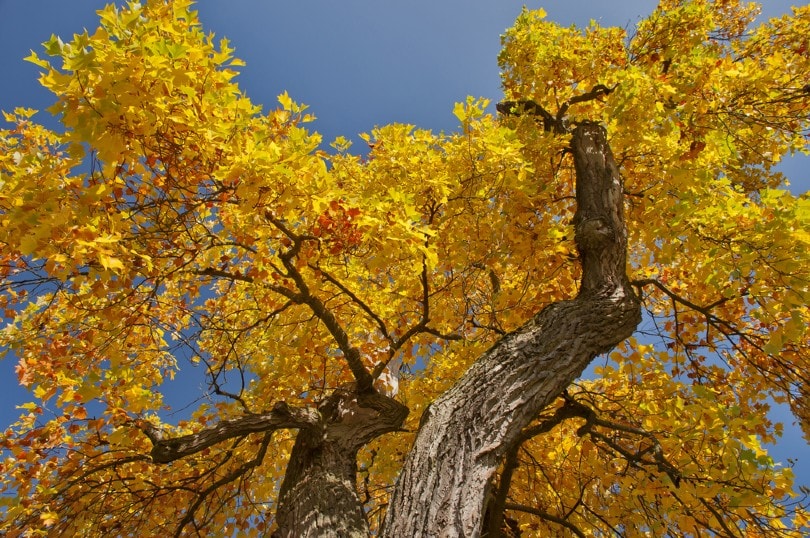
We can’t speak for you, but there are few trees more beautiful in the fall than the tulip tree. With their sprouting limbs and foliage that turns a golden yellow, these fast-growing trees are sure to make a statement in your back or front yard.
27. Walnut Tree (Juglans)
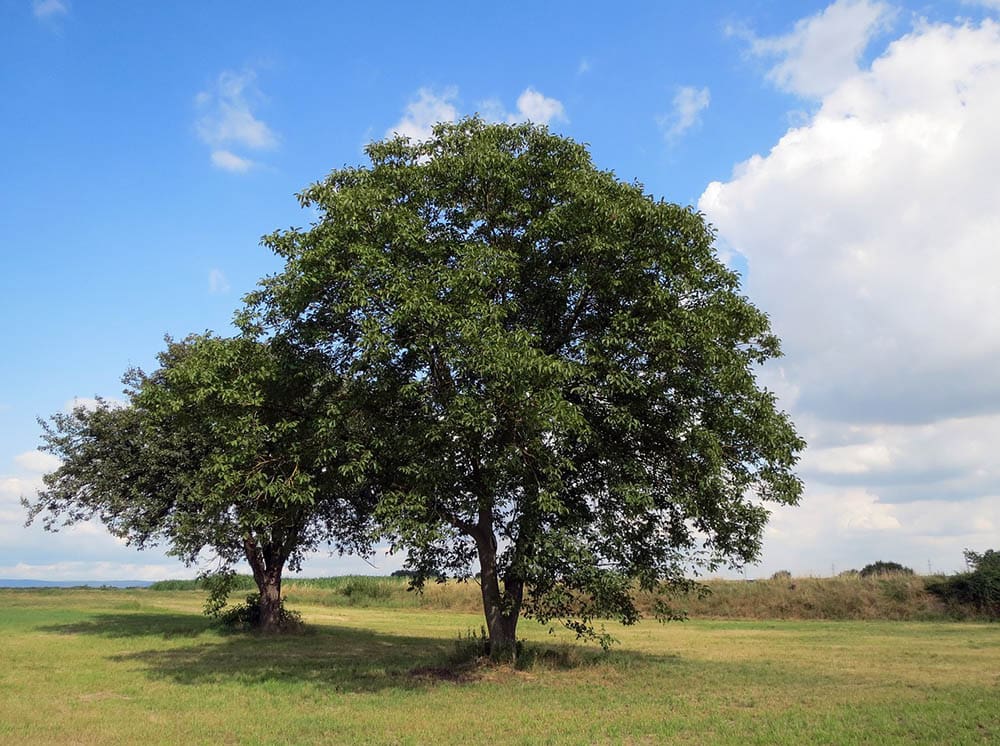
As the name suggests, walnut trees are most popular for their formation of delicious walnuts. There aren’t a ton of walnut species in the world, however, having them in Michigan is a real gift since they are most popular in California.
28. Willow (Salix)
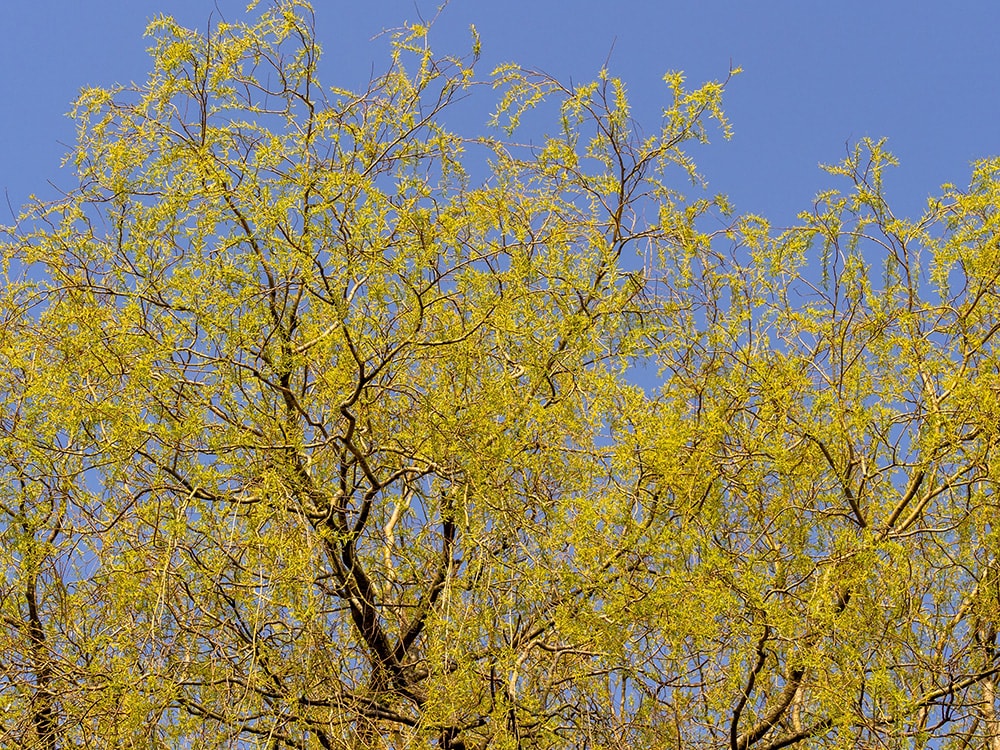
We saved the best for last! It’s hard to argue against the fact that willows are some of the most easily identifiable trees in the country with their long, drooping branches that sway in the wind. There are over 400 different species, although most have a watery sap with soft and pliant wood.
Conclusion
Of course, it’s not easy to put every single tree species in a single article. However, we have done our best to put some of the most popular tree species found in Michigan in one place. With any luck, you’ll be able to look back at this article and start identifying all of the wonderful plant life that surrounds you in this heavily forested state.
Featured Image Credit: Marinodenisenko, Shutterstock
Contents
